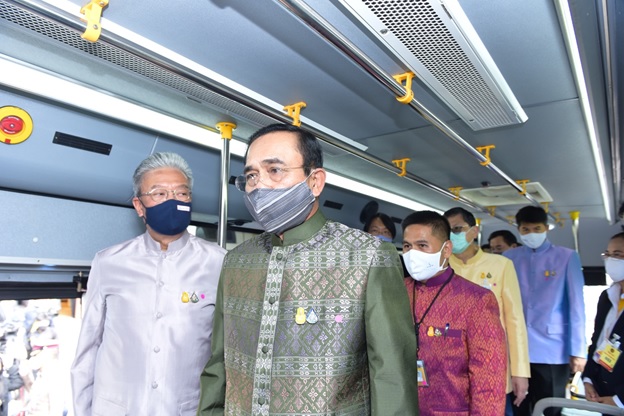On 29 September 2020, a consortium of academic institutes, public and private enterprises met with Prime Minister General Prayut Chan-o-cha and members of the Cabinet at the Government House to present the progress of City Transit E-buses Project.

The consortium – consisting of NSTDA, Metropolitan Electricity Authority (MEA), Provincial Electricity Authority (PEA), Electricity Generating Authority of Thailand (EGAT), Bangkok Mass Transit Authority (BMTA), Thai Industrial Standards Institute (TISI), Thailand Automotive Institute, Department of Land Transport, King Mongkut’s University of Technology North Bangkok (KMUTNB) and Thai Auto-Parts Manufacturers Association (TAPMA) – was established to implement City Transit E-buses Project aiming to enable BMTA to turn its existing buses into electric buses and strengthen the capacity of Thai electric vehicle (EV) industry. Sponsored by NSTDA, MEA, PEA and EGAT, the project selected four companies – each receiving a grant and a retired BMTA bus to develop an E-bus prototype. On average, the prototypes can travel 160-250 km. on a single charge, take about 2-3 hr to reach a full charge and offer a maximum speed of 80-90 km per hour. The modification costs 7 million THB per bus, whereas a brand-new imported E-bus is priced around 12-14 million THB. Through this project, the four firms - Phanthong Machinery, Choknumchai Hi-tech Pressing, Electric Vehicle (Thailand) and Sabai Motors (Thailand) – has developed their capacity and are now ready to manufacture E-buses for the market.

In addition to the E-bus prototype, the consortium has built a test track at KMUTNB Prachinburi Campus for evaluating the performance of E-buses under flooding conditions and is preparing an E-bus cost-analysis report to be presented to the Cabinet and relevant agencies.
NSTDA researchers at MTEC and NECTEC have provided technical assistance and consultation to the four companies throughout the process of prototype design and construction. The team has also built two charging stations for use during the test drive and is planning the performance evaluation of these prototypes.
